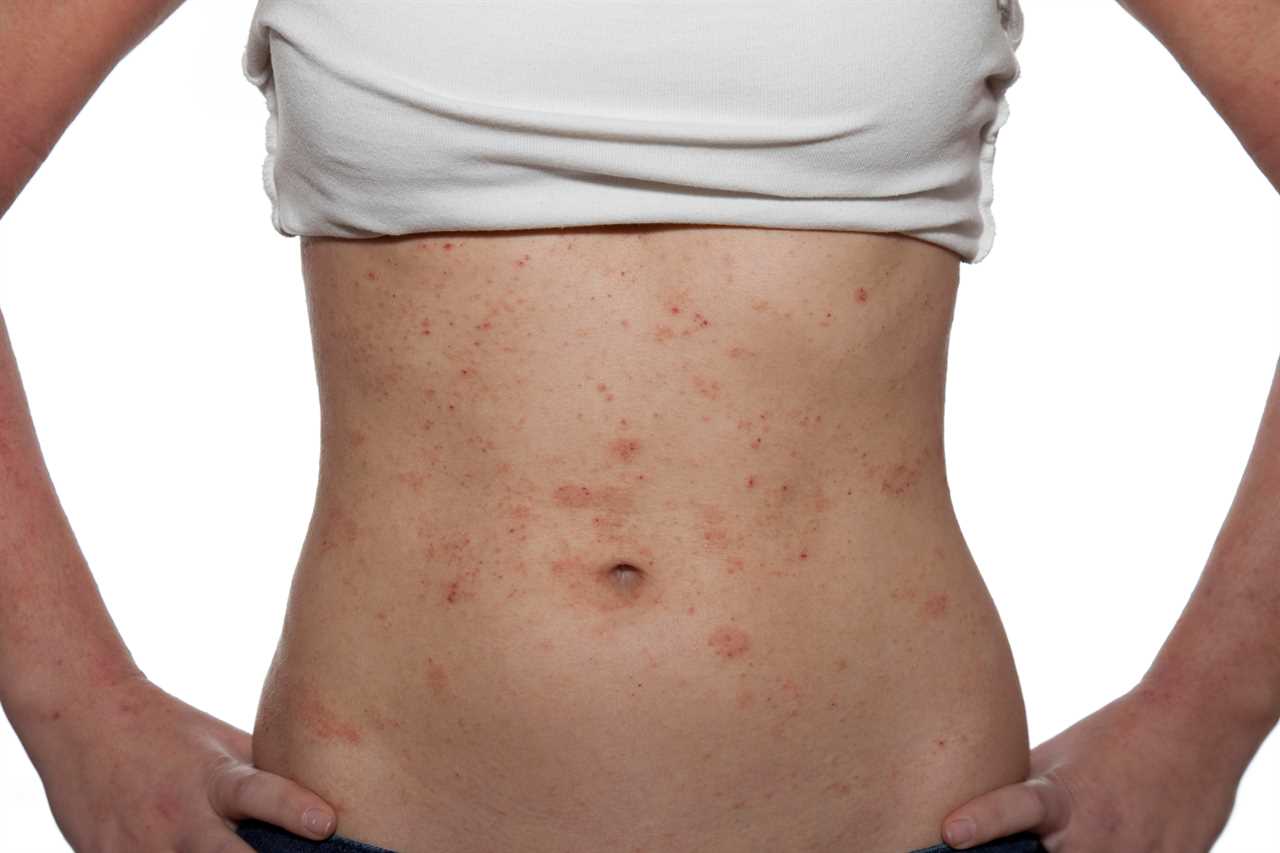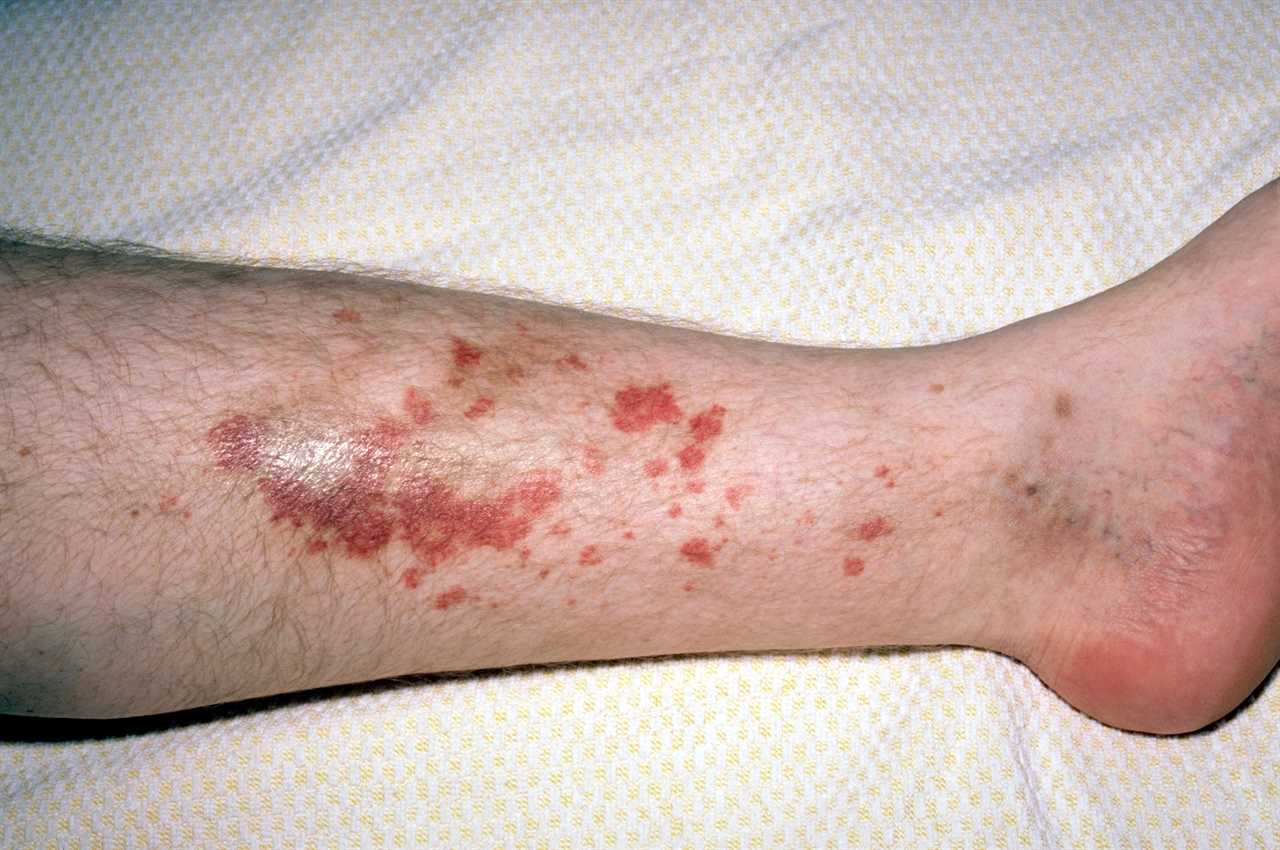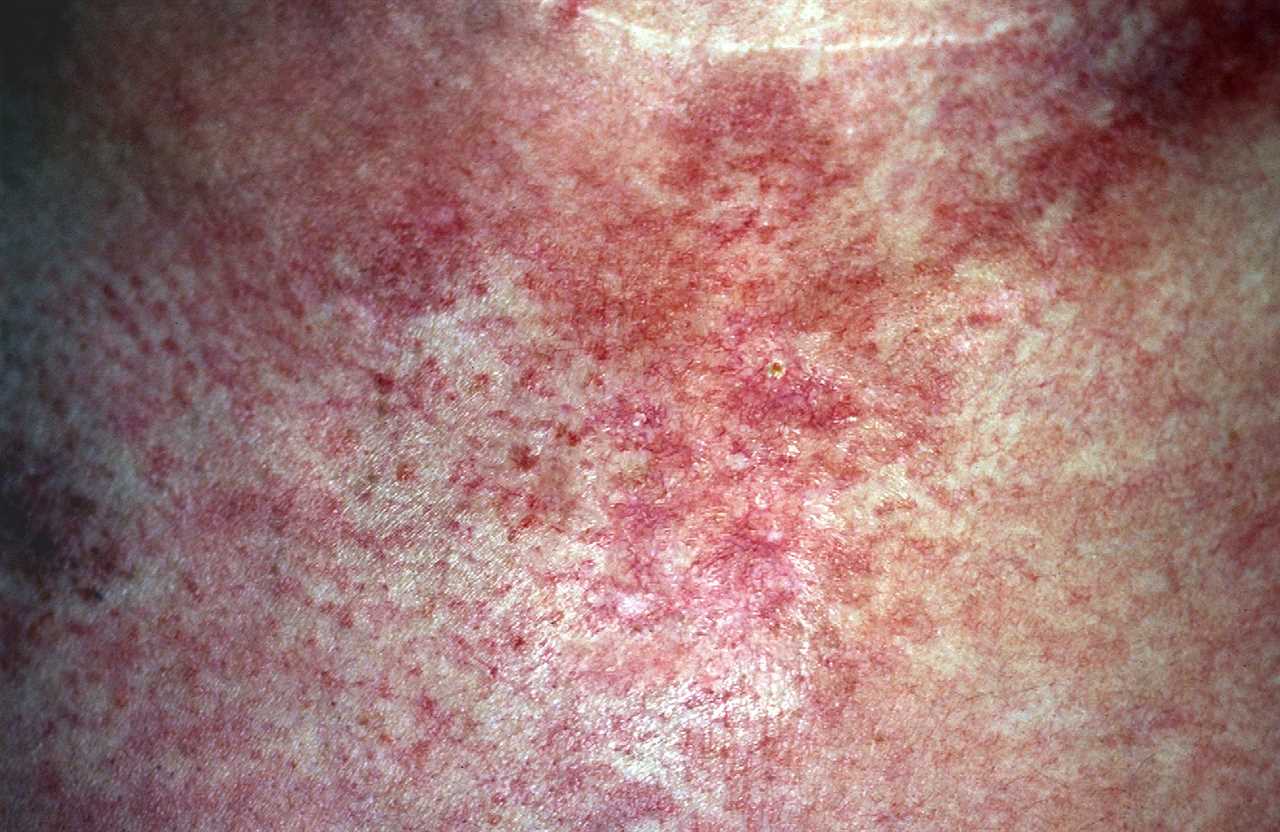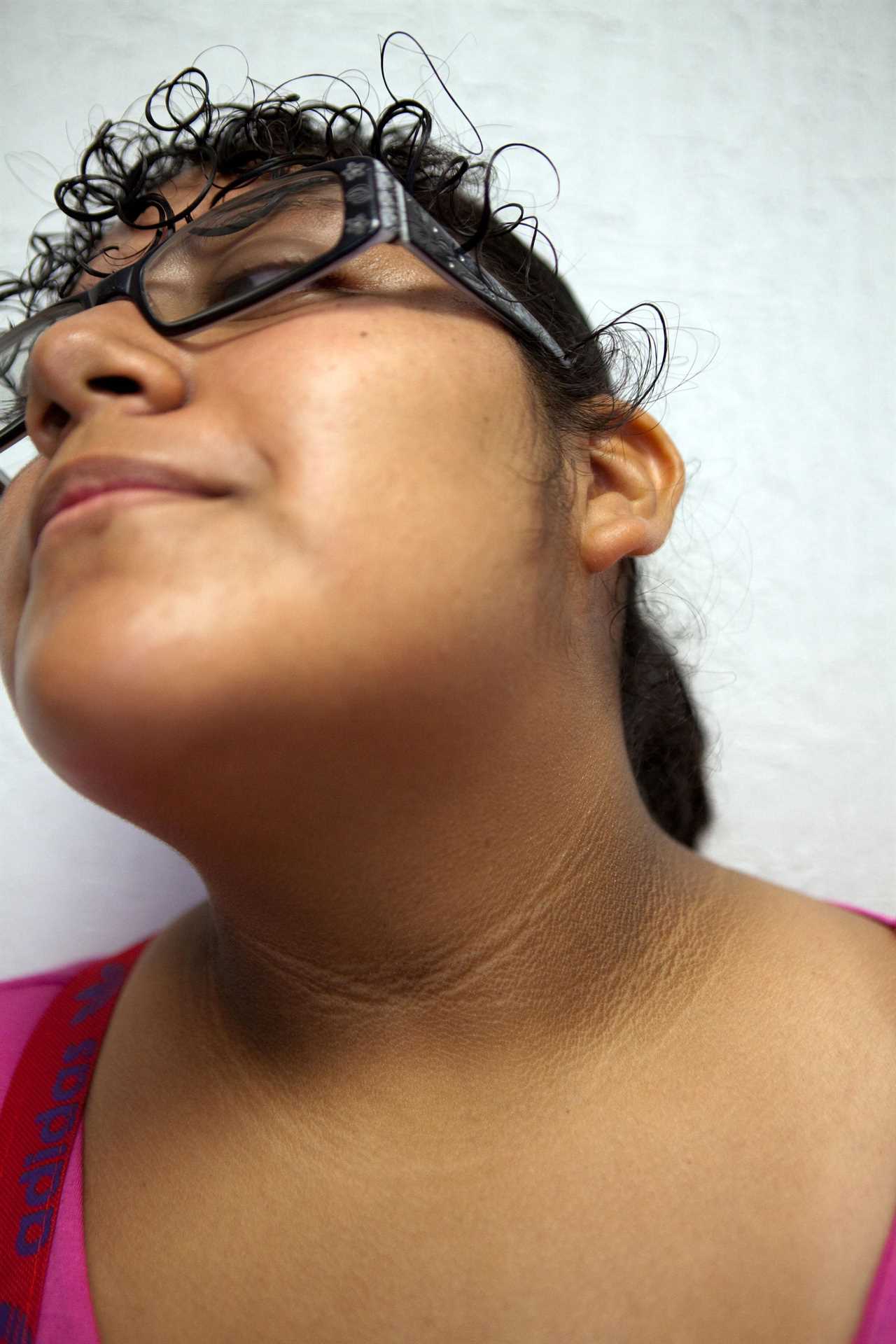RASHES are a common occurence and are usually harmless.
But from blisters to hives, what happens on the skin can be a sign of all sorts of ailments.

Dr Walayat Hussain, a spokesman for the British Association of Dermatologists, said the skin was a “tricky subject to discuss without alarming people”.
“The skin is like the window to the body if you like, so sometimes that can be a sign that something is going on inside the body,” he said.
Millions of Brits suffer with common conditions like eczema, psoriasis, and acne.
While being incredibly frustrating to live with, they do not pose a serious risk to health.
However, experts have warned serious rashes with similar symptoms can be disguised.
Read on to find out about what you rash symptoms could be really caused by…

“If you treat the cancer, the rash goes away.
“The most common type of cancer that causes rashes and presents with symptoms that dermatologists are used to seeing are blood cancers.
“People who have leukaemia or lymphoma often present with specific things on the skin that dermatologists are trained to recognise.”
Here’s out guide to the rashes that could be a sign of cancer…
1. A patchy red rash that can turn scaly: Lymphoma
Mycosis fungoides is a common rash in patients diagnosed with lymphoma.
Lymphoma is a cancer of the lymphatic system – the network of tissues and organs in our body that work to rid us of toxins.
It can be particularly dangerous because the cancerous cells can travel through the body in the bloodstream.
The cancer cells can then grow in several places at once, affecting multiple parts of the body.
A person with lymphoma may develop mycosis fungoides, a rash that is caused when the blood travels to the upper layer of the skin.
In its early stages it may appear as a patchy red rash but as it progresses it tends to become scaly.
It may be itchy and look similar to eczema.

2. Tiny red spots covering the skin: Leukaemia
Leukaemia, a type of blood cancer that starts in the bone marrow, can spread throughout the body in the bloodstream.
A person with leukaemia may also develop tiny red spots on their skin known as petechiae.
The rash is caused by broken blood vessels under the skin.
Children may also develop a rash called acute myelogenous leukaemia, which causes dark spots to appear on the skin.

3. Red spots UNDER the skin: Blood clotting issues
If you notice purple spots under the skin, ranging in sizes from small dots to large patches, it could signal a blood clotting disorder.
The rash is called purpura, which can be either caused by low or high levels of platelets – cells in the blood that cause clotting.
Examples of things that could cause this rash include weak blood vessels, scurvy, medications or vaccines, infection such a HIV or Hepatitis C, or a condition present from birth.
4. Reddish rash on your hands or back: Any cancer
Dermatomyositis tends to appear as changes around your nail folds, a reddish rash on the back of your hands, especially around the knuckles, and a shawl-like red rash on your back.
This rash can be associated with any type of cancer.
It can also appear on your face, eyelids, chest, knees and elbows.
Dermatomyositis can also cause muscle weakness and inflamed muscles.
5. Red pinpricks with flu-like symptoms: Meningitis
A red pinprick rash under the skin can signal meningitis, a sometimes fatal condition.
The symptoms of meningitis mimic the flu (high fever, stiff neck, headache and sleepiness), and the rash may not always occur early on.
It starts as small, red pinpricks before spreading quickly and turning into red or purple blotches, the NHS says.
You can check if you or your child has it by pressing a glass against the rash – if it does not fade on pressure, then it is caused by meningitis.
It can be a sign of sepsis caused by meningitis and you should call 999 straight away.
All parents are told to vaccinate their babies against meningitis very early on.
6. Dark, thicker patches of skin: Cancer or diabetes
Acanthosis nigricans is when darker, thickened patches of skin develop around the armpit, groin and neck.
It’s not a condition in itself but a sign of an underlying health problem.
The patches will be dry and rough, feeling similar to velvet, and can also be itchy.
Acanthosis nigricans usually develops slowly over time but spreading quickly has be linked to cancer.

A dark patch (or band) of velvety skin on the back of your neck, armpit, groin, or elsewhere could mean that you have too much insulin in your blood – a sign of diabetes.
While diabetes itself is not deadly, it has a number of serious complications from heart attacks to amputations, so it is vital to get an early diagnosis.7
7. Purplish rash with swelling, blackening: Rotting flesh
An immediate medical concern, necrotising fasciitis is a rare but serious bacterial infection that causes the skin to “rot”.
Necrotising fasciitis can start from a relatively minor injury, such as a small cut, which allows bacteria to get into the skin.
Symptoms usually come on suddenly and fast.
The affected area swells and may show a purplish rash.
This leads to large dark marks forming that turn into pus-filled blisters. The wounds blacken as the tissue dies.
Just four or five days after the infection starts, a person can become seriously ill with dangerously low blood pressure and high temperature.
Even with treatment, it’s estimated that up to two in every five cases of necrotising fasciitis end in death.
8. Widespread rash: Drug allergy
A rash that covers a wide area could be a sign of drug hypersensitivity syndrome (DRESS) – when a medication causes an allergy.DRESS can take a few weeks to appear after you start a new drug, and continue for a while even if you stop taking it.
Patients report a diverse range of rashes – from blistering and lesions to eczema and facial swelling.DRESS can lead to issues with internal organs, which is why it’s so serious. It could cause multi organ failure, or lead to lung disease, inflammation of the heart and seizures.
BUT… in most cases a rash is harmless
With skin rashes linked to so many serious diseases, including cancer, Dr Hussain reassurred most of the time, a rash is harmless.
“The most common cause of a rash will NOT be cancer related. I think that is a really important message to give to people,” he said.
“The bottom line is if there is anything on your skin that you are worried about,you go and see your GP.”






